Growth at scale is hard. Doing it over an extended period is even harder!
You'll encounter channel saturation. Take online advertising, back in 1994 an online display ad in Hotwired's magazine could get a click-through rate of 44%. Today the average click-through rate of a Facebook Ad is 1.8%. As more companies and marketers start to leverage a channel for growth, the results for everyone start to diminish.
There is also the problem channels you're reliant on for growth could start to stagnate or lose their audience. Twitter is a prime example of a platform who's growth has stagnated. The open and click-through rates of email continues to decline. For some age groups, the usage of email is in free-fall, making it more difficult for marketing and sales to utilize email as a promotion channel in the future (image from Techcrunch).
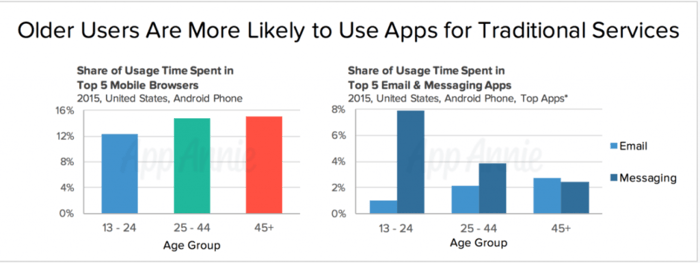
Most companies are usually reliant on a 3rd party platform for growth. An update from Google or Facebook can completely change your growth trajectory. Take the example of the video mobile app Viddy, once adding 500k new users per day, with 30 million in investment until a change to Facebook's algorithm killed their business.
Finally, you'll often find that channels have a ceiling for growth and will eventually start to plateau. A good example of this is Google Adwords or SEO for B2B companies.
Ugh, it's hard, right?
However, not impossible. There are a growing number of tech companies who are leaning into a product-driven growth strategy to sustain their upward trajectory.
At HubSpot, I've spent a significant portion of my time acquiring free users for our products and working with our product and engineering teams to help upgrade these users into paying customers. In a freemium model, your product is at the heart of your go to market. People can start to use it and gain value from it without having to pay you a single cent (euro, or pound).
Creating a product first strategy isn't without its challenges. In this article, I want to focus on 3 important parts in making that strategy work.
1. How can my product leverage existing platforms for growth?
One way you can create some traction for your product is to integrate with platforms that already have a lot of users.
Pinterest is an example of a company who leveraged other platforms for growth. During their sign up flow, they would ask you to sign up with either your Facebook or Twitter account. It was their integration with Facebook that helped them gain some early traction. It allowed them to tap into their user's networks as people started sharing their Pinterest boards with friends on Facebook.
Pinterest ran into some of the growth challenges we listed at the beginning of this article. In 2013 an update to Facebook's algorithm reduced the visibility of content from large publishers in people's timeline. Pinterest was one of those who the update affected, so they decided to focus on Google as their growth platform. The below chart is from Searchmetrics showing those websites that gained most in search engine visibility throughout 2016.
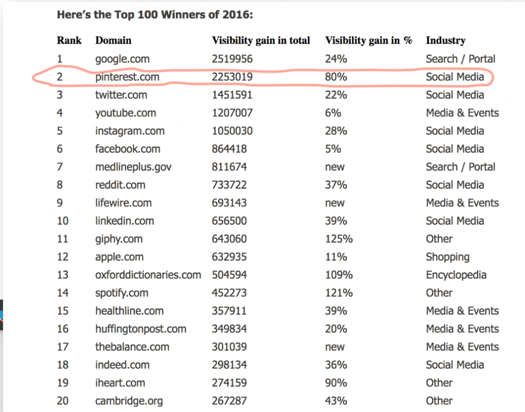
Pinterest has been able to leverage their user generated content to dominate Google's SERPS, organizing that content around popular key phrases. They interlink the content to create topic clusters for a range of different subjects.
Wait, what's a topic cluster?
Topic clustering is a better way to approach your content strategy. Instead of focusing on a set number of keywords, you cover a topic in depth with a variety of different content. The most common implementation of this is the hub and spoke technique.

You can create one long-form piece of content (a pillar page) targeting a particular topic, and then create different pieces of content for keywords related to that topic. You then interlink them like the diagram above. Earning external links to your collection of content will help all content associated with that topic rank better, and help you acquire more traffic for searches related to that topic.
Ugh, there is going to be a lot of competition right?
Yes, but the good news is there are always opportunities to do things better than your competitors.
Let's take RapGenius as an example. When they launched their rap lyrics website, Google was an ideal platform for growth considering the amount of search volume that existed for rap songs. There was already a lot of other sites competing for the same keywords. But RapGenius added features that made their content 10X what their competitors had, helping them to dominate Google.
They allowed users to signup and add annotations to different rap lyrics.
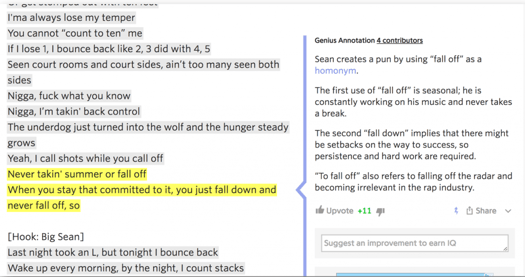
Consider how much impact this feature had on their ability to dominate Google:
Users search Google for the words to a particular rap song. A % of them scroll through the first page and click on a link from RapGenius.
A % of users who find that result decide to sign up for an account and add commentary to those lyrics in the form of annotations.
Those annotations make the content a lot richer than competing pages, and as a result, RapGenius's content ranks even better in Google.
Repeat cycle
When deciding on what acquisition channels are the right for your product, talk to customers and figure out what platforms they spend their time on? What platforms do they research products on? Dig deep into their habits. Using this information you can build out a map of channels that are relevant to potential users of your product.
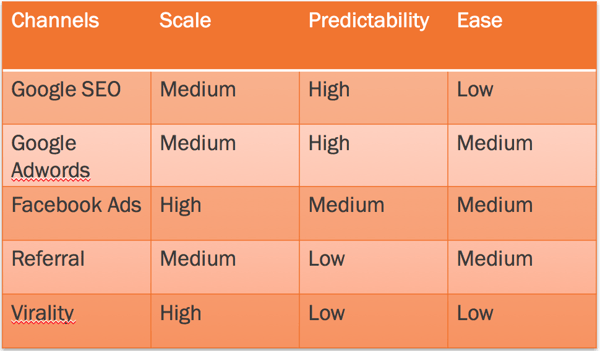
You can use the following criteria to prioritize what ones could be the right fit for your product.
- How scalable is this channel? At what point could I hit my growth ceiling?
- How predictable are the results? Have I experience with this channel, am I confident of replicating that success?
- How easy is it for me to build into this channel? For example, it's a lot easier to buy Facebook Ads vs. creating product virality.
2. How can I add virality to my product?
Viral loops are one of the best ways to increase awareness of your product and grow acquisition of new users. They're an essential ingredient to creating the product driven growth formula, and a huge advantage for companies who manage to crack the virality code.
If you want to dig deep into the world of viral loops, I'm a big fan of what Brian Balfour and Andrew Chen are doing over on Reforge (I'm one of the course mentors). I recommend their course to anyone who wants a deep understanding of growth.
For this article, I want to touch on the role of WOM, product virality and incentivized referrals in creating sustainable growth for your product.
WOM: WOM is when customers recommend your product to their network. I've talked to many start-ups who still cite WOM as one of, if not their biggest source of new users. The challenge with WOM is it's tough to measure.
For me, the golden rule of WOM is to track your Customer NPS religiously.
Product Virality: For the purpose of this article, I'm going to split product virality into two parts. I'm borrowing the acronyms used in this post from Philip La that I highly recommend.
i. Distribution product virality (DPV): Product virality where existing users spread awareness of a product to their network.
One of my current favorite example of this is Zoom. I can't count the number of non-Zoom users I've signed up due to my product usage.
A significant portion of my week is spent using Zoom to connect with my different teams and with people both inside and outside of HubSpot. A percentage of these users have never heard of Zoom.
Consider how this loop works:
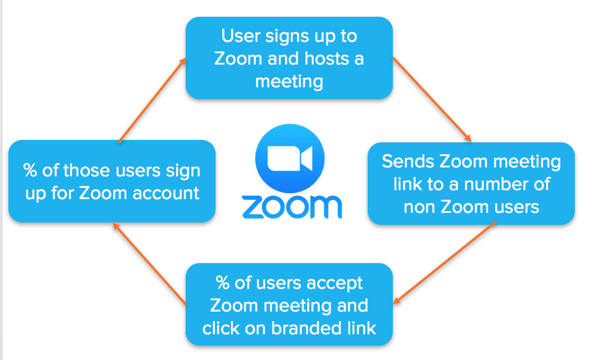
As more free users sign-up, they'll expose the product to more non-users in those networks, and the cycle keeps on repeating.
It's important to note, for a loop like this to be successful, the product needs to provide a great experience or else the conversion rate from non-users is going to be near 0.
At HubSpot, we've started to push on similar DPV loops by exposing our free products to the networks of people who use them.
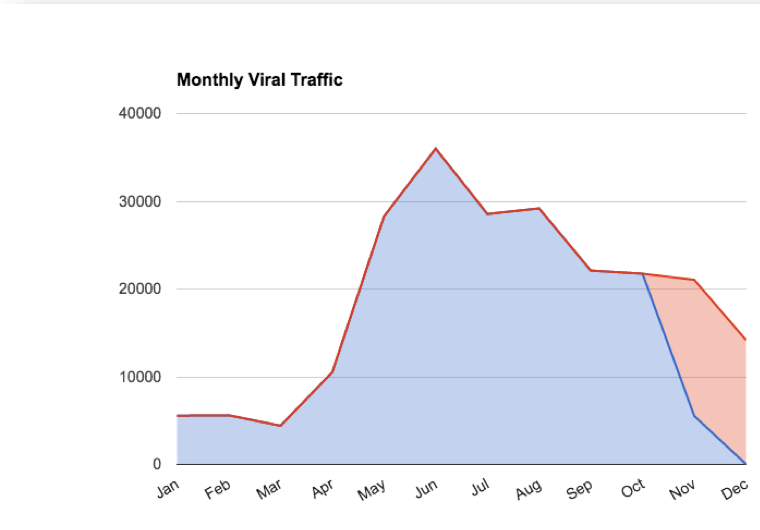
The challenge with DPV loops is you need a critical mass of people using your product because the conversion rate through that funnel won't be incredibly high.
ii. Pull product virality (PPV): Product virality where existing users require people in their network to join to gain value out of a feature.
Slack is an example of a product where you need to invite additional people to the product to get value from it.
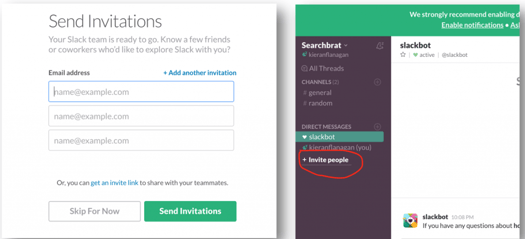
There are countless other examples, think DropBox when you share a folder, Skype or WhatsApp when you want to connect with people in your network.
A PPV loop will typically create users who convert and retain at much higher rates than DPV loops, but DPV loops have the capacity to create much more awareness for you at the top of the funnel.
iii. Incentivized Referrals: Incentivized referrals allow you to reward customers for referring your product to their network. There are different types of rewards you can give.
Loom allow their free users to avail of premium features if they manage to get 2 or more users from their network signed up.
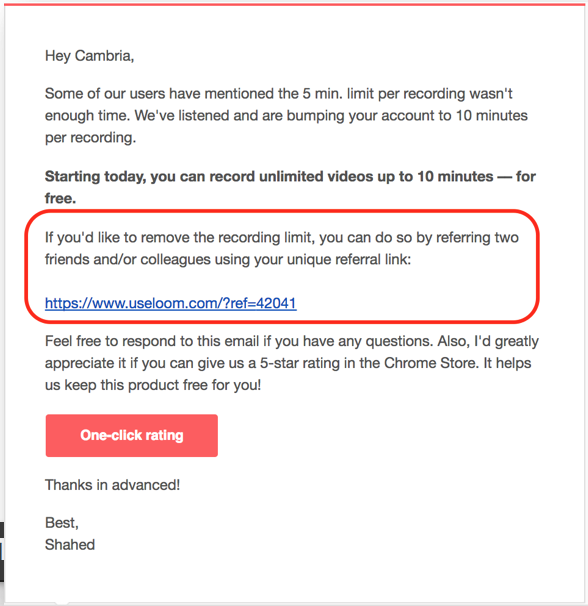
Evernote is another example of a company who use premium features to incentivize referrals from their userbase.
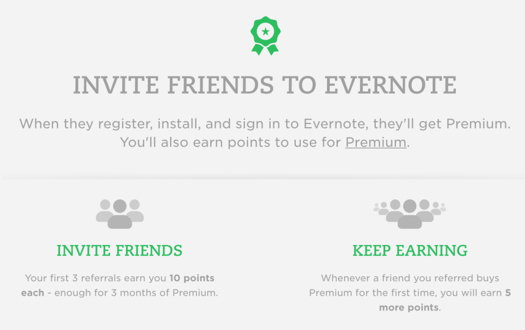
You can also incentivize users by just giving away money. PayPal used this tactic aggressively in their early days to drive a significant amount of their growth.
They gave away $20 for opening an account with them and another $20 for any referral from that user who signed up for an account. It cost them a whopping $60 to $70 million dollars and drove between 5% to 7% of their daily growth.
You can even incentivize users to refer your product before it has even launched.
Take X.ai the personal assistant bot. I was signed up to their waiting list long before their official launch date. Upon signing up, I received the following email:
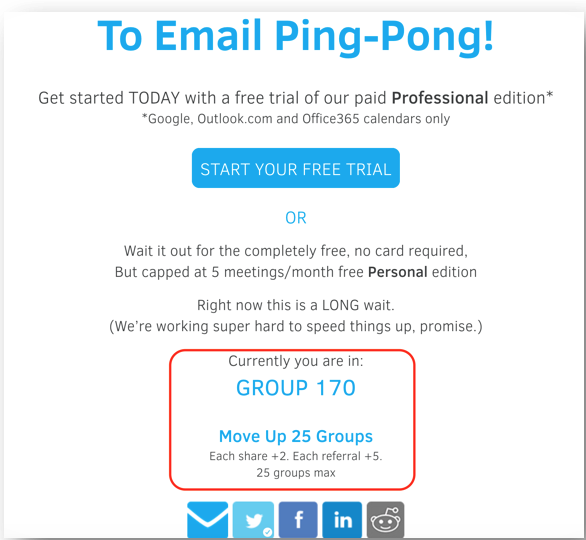
It showed me where I was in the queue and gave me the option to jump some spots if I shared it with my network. Using this tactic as part of your launch, you can generate a lot of interest in your product before it ever goes live.
The Fintech app Robinhood used the same tactic to acquire more than 400k people onto their waiting list and is now valued at 1.3 billion.
How can I quickly introduce the user to the value of my product?
The last thing we'll cover is your product onboarding. When acquiring free users onto your product, your aim is to help them understand the value of that product. You need to understand what usage events are the ones that turn people into active users who end up paying you money and retaining.
Often called the AHA moment, there are many well-known examples of this:
- Facebook's AHA moment is a user connecting with seven friends in 10 days
- DropBox is a user adding one file to one folder on one device
- Slack is 2000 messages sent between team members
- Twitter is X users followed and Y% following back
You need to continually look for usage patterns that help you uncover that AHA moment for your product. For example at HubSpot our product insights team regularly run analysis to look for usage events that correlate with free users becoming active, free users upgrading to a paid customers and common usage actions among users who have high retention.
Here is a great article from Tom Tunguz that can get you started on extracting that information for your startup.
It's the job of our product onboarding to get users to complete those actions so they can see the inherent value in both using for our products and upgrading to paid features. The advantage of running a product driven growth strategy is the product takes on the role of qualifying users who would be a good fit for your products.
Within our funnel, we provide the option for a user to talk with a sales person, or upgrade to a self-serve model. For people who decided to reach out to a salesperson and were qualified through product usage, we found they closed at 240% higher than those who didn't.
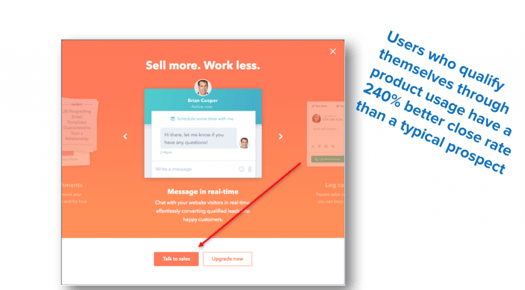
If thinking about creating a product driven formula for your business, you should be thinking about how your product can extract users from platforms, how to add virality to your product and how to introduce the user to the value of your product in as short a time frame as possible.
If you enjoyed it this article, why not signup to my Growth TL;DR newsletter. I send one email per week featuring a roundup of interesting takeaways I've had from reading growth articles, discussions or simply talking to other people in the industry.
It's one email per week focused on delivering real value to your inbox.
Topics: Growth
